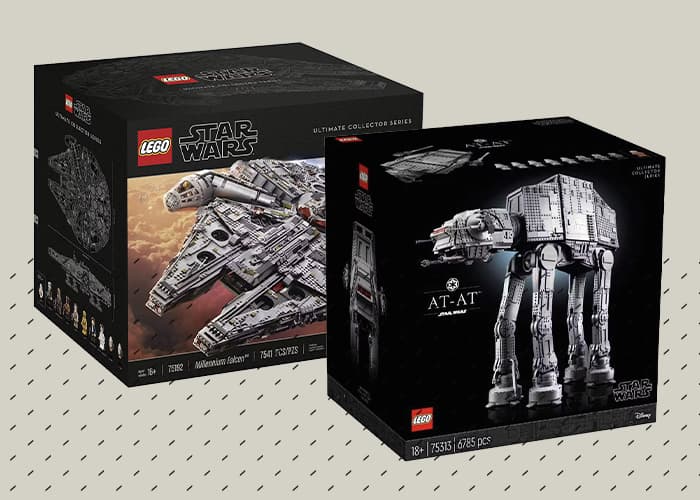Snarkitecture is playing with what it means for a space to be open, inviting, and engaging. In speaking with the Snarkitecture team, Alex Mustonen, Co-Founder and Partner at the design firm, tells us that one of their major intentions is to “reimagine the familiar and to create the unexpected.” Over the years, they’ve become masters of challenging ideas of what a space should be in ways that invite you into them but also demand that you wrestle with and engage with them. “One of the first things we tried to do in starting our practice was to create environments that would not only invite you to enter, but will allow you to physically interact in a very tactile way with your surroundings,” Mustonen says. “Which is something that we feel capital-A ‘Architecture’ doesn’t always allow for, or invite you to do.”
Founded and based in New York City, Snarkitecture is a collaborative design practice that navigates the boundaries between different disciplines and aspects of the design world. They’ve worked on everything from international flagship retail build outs for brands like Kith and collectible plaster-casting of sneakers for wider release. Their team is led by co-founders Daniel Arsham and Alex Mustonen, whose influence on the practice’s design language is very clear.
Snarkitecture is an integral part of Daniel Arsham’s Art & Residence program, which features the creative interpretation of chairs through the lens of nine different designs at Milan Design Week. The chair Snarkitecture created for this exhibition fits seamlessly into their catalog of previously designed objects, delivering a monochromatic and monolithic take on the classic armchair. Like their other work, it invites not only your attention, but also a personal reconception of what a chair may look like.

The Snarkitecture x Gufram Sculpted Armchair shown at Milan Design Week
“We’re employing seating in ways that invite engagement and allow for pause and reflection,” says Mustonen before diving deeper into how their studio thinks about inviting and engaging spaces. “We’re all people and we’re all moving through the spaces we move through every day, and I think there’s a strong case to be made for making them as pleasant and as inviting as possible and also functional.” Ideas of pleasantness and functionality and the ways in which those two concepts tangle and wrestle together is very important to Snarkitecture. In looking at their archive, that becomes very clear through objects like the Slab Table from 2010, which is a beautiful surface that is immediately portrayed very unseriously with a table tennis net fixed to it.
The chair created by Snarkitecture seemingly started as a marble cube with a carved seat that has been eroded by time causing the piece to look almost like the remnants of a demolished stone pillar. In reality it’s as soft as a pillow. In describing the general shape of the chair, Mustonen talks about how they altered what is “essentially a cube” in a few key ways. “One is this soft scoop that’s very gentle and curvilinear that forms the seat. And then there’s this much more irregular profile to the top of it that positions it and this suspends it between something that feels like it’s either emerging or has been around for a long time and has started to disintegrate or fall apart.”
The language Snarkitecture uses to describe their chair is both distinctly of their practice and an incredibly precise definition. “It’s monochromatic and we’ve kind of been playing around with calling it monolithic as well, just because of the scale of the piece, but it’s this big form that’s emerging from the ground,” says Michie Nimsombun, a designer for Snarkitecture. The design practice also built the base of the chair into the piece. This makes it appear as if this chair is “this big form that’s emerging from the ground,” the chair’s base is built into it or as the Snarkitecture team would describe, “it’s the chair and the ground that the chair sits on.”
While the chairs at the StockX Exhibition in Milan aren’t available to sit in, Snarkitecture assures us that a significant part of this piece’s inviting and engaging design is that it’s very comfortable. “It appears to be something that’s quite grounded and solid and excavated and has this kind of almost stone or rocklike appearance, but when you go up to it, it doesn’t need a cushion because the whole chair is effectively the cushion. It’s soft and comfortable, but at the same time appears playful or unexpected,” says Mustonen. Snarkitecture makes it very clear that achieving something like this, creating a comfortable chair that looks like it would be hard and uncomfortable, should be credited in large part to their collaborators on the project, the celebrated Italian design firm Gufram.

Snarkitecture x Gufram Sculpted Armchair
The radical Italian design firm, Gufram, is an interior design company known worldwide for creating spaces and objects that push the boundaries of industrial design. Founded in 1966, the firm became well-known for the creation of disco-furniture in the late-60s and early-70s. They’ve created iconic and subversive pieces like the Bocca couch, which looks like a pair of lips, the Pratone Chaise Lounge, and the Cactus Hall Tree. Beyond the wildly imaginative flair that’s become inseparable from their furniture, Gufram has also become very well known for their proprietary Guflac treatment coating, which was used in the creation of their Milan Design Week collaboration with Snarkitecture.
Snarkitecture and Gufram’s partnership for Milan Design Week is just the most recent product of an ongoing partnership that began in 2017. The pair has previously collaborated on an entire series called “The Broken Series,” which featured three pieces including the first mirror ever produced by Gufram. Like their chair for Milan Design Week, The Broken Series leaned heavily into Gufram’s proprietary polyurethane treatment, demonstrating its versatility. Gufram specifically refers to the bench delivered as a part of The Broken Series as “an irregular slab of ‘soft concrete’ in polyurethane,” which aligns closely with the way that Snarkitecture has described their chair.
It’s clear that Snarkitecture holds a certain degree of reverence for Gufram. When reflecting on the partnership between the pairing, and their presence at Milan Design Week, Mustonen said, “I think also, just important to note, a connection to the heritage and legacy of Italian manufacturing and craft, which is such an important part of the identity of Milan. And the reason why Salone exists is because of the capabilities and history of companies like Gufram.”
The culmination of this chair’s collaborative nature, its placement in an exhibition at Milan Design Week, and its ties the deep, storied history of Italian design make it clear that Snarkitecture has something special on their hands. When asked what they’d like people to take away when interacting and engaging with this piece, Snarkitecture made it clear that creating a memorable experience was most important. “I think anytime we can create a scenario where someone is seeing something or experiencing something that they haven’t before, that’s a win for us. And so hopefully we’re able to achieve that here,” Mustonen said. But it also became even more evident that creating something comfortable was another massive part of this project as Mustonen added to his answer with this, “I think there’s a really nice payoff too when really designed chairs, especially more sculptural ones, and I think ours is, are actually comfortable.”
Naturally, ideas about spaces that are engaging and inviting, or that invoke a sense of comfort, are deeply tied into the ways that we think about home. In the ideal world, home is where we’re most able to take something like Snarkitecture’s design philosophy into our hands, creating our own engaging, inviting, and comfortable spaces. The Snarkitecture team leaned heavily into the themes of play and engagement that permeate their practice when describing how this chair may fit into somebody’s personal space. “I love the idea of it being a piece in a collector’s home,” Nimsombun says. “But the kids are playing on it or making a pillow fort with it and it encourages that.”
“I think we want this piece specifically to be something that people can live with and does have a kind of universality in a way,” Mustonen says. Universality is something that this piece unquestionably achieves as it seems to consistently violate the boundaries one would think it would have. It looks like a hard, stone sculpture but it’s actually very soft and comfortable. It appears to be an art piece, rising up out of the ground, but at the same time, it’s a lounge chair that Snarkitecture assures can fit into a home environment. Although they did playfully offer this caveat, “Granted, it’s kind of a big chair. You may need a little bit more room than a studio apartment” says Mustonen.
Snarkitecture’s ideals for their chair seem to be manifold. They sought to bring together their design ideology with a historic collaborator in Gufram, playing with materials that many have likely never seen before to create a piece that is inviting, engaging, and asks you to pause and think about it. By all stretches of the imagination, this chair does all of those things. It honors the gravitas of Milan Design Week and the heritage of Italian Radical Design. The chair also invites you to re-engage with your ideas of seating and comfort, and even to reimagine what the foundation of your future pillow fort might be built upon.
Snarkitecture’s work is on display during Milan Design Week along with the other creatives involved in the Art & Residence Program presented by Daniel Arsham and StockX. “Art & Residence” presented by Daniel Arsham & StockX explores this converging of worlds and taps non-traditional creatives to push the boundaries of what a chair can be. From fashion designers to architects, “Art & Residence” bridges creative communities – from the world of StockX, to the storied platform of Milan Design Week. For more information on the creatives involved in the program, you can click here.























